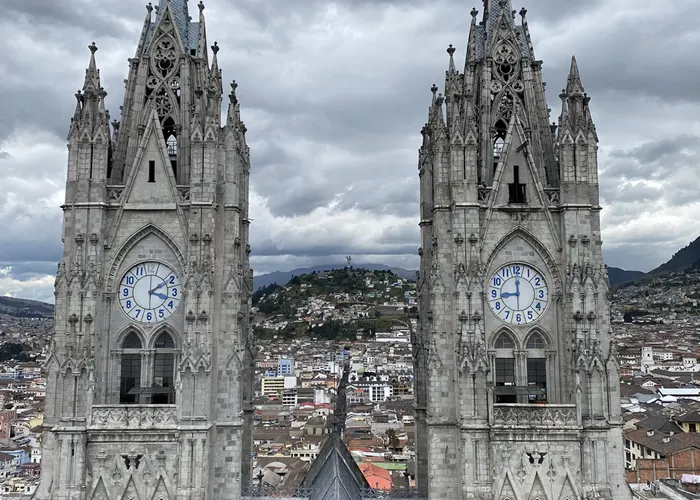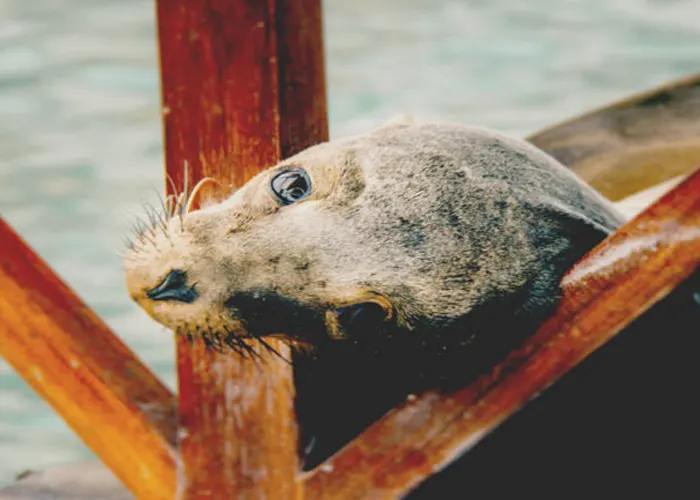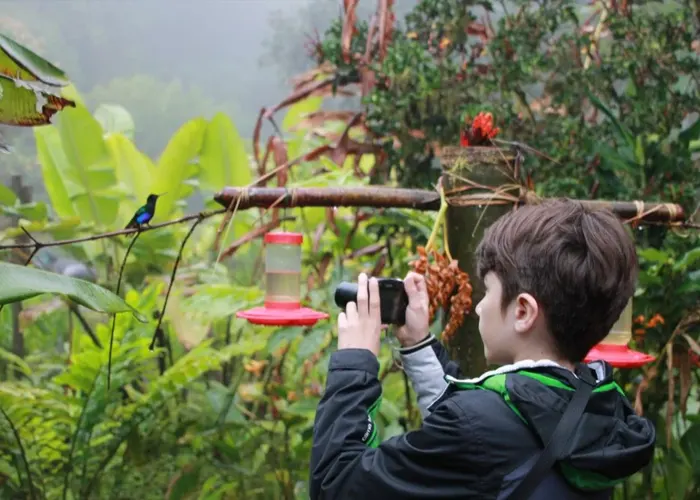Experience report Ecuador and Galapagos round trip part 2
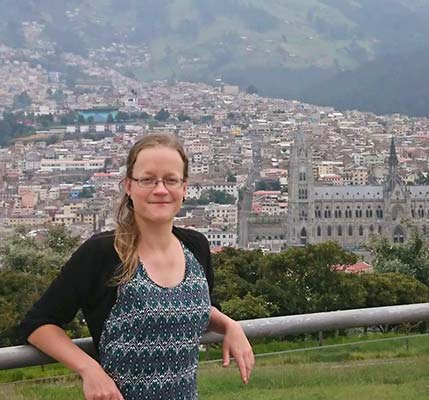
Maria S.
Two weeks ago, we shared with you the first part of the travel experiences of two of our travelers. Now follow them on their journey from Chimborazo to Guayaquil. As in the first part, this segment also offers a personal and authentic perspective on their experiences.
Chimborazo and Riobamba
Ah, that was a lovely accommodation, but now it’s time to continue on to Riobamba. Along the way, we stock up on water and chocolate to stay fit for the climb to Chimborazo. We reach an altitude of 4,800 meters on a rather adventurous road. The air is quite thin. We only walk a short distance to the monument and the small plaques commemorating those who have died here. Unfortunately, the mountain is shrouded in clouds that refuse to clear. So, we admire the lava remnants, vegetation, and further down, alpacas and vicuñas.
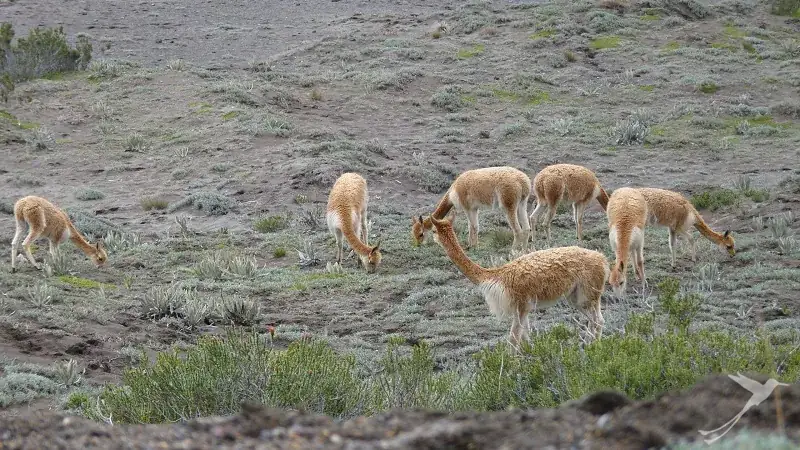
Even the descent from the mountain was adventurous due to the numerous potholes. Washington had to concentrate hard but managed the route brilliantly as always. The thin air had exhausted me, so I took a short nap to recharge for Riobamba, a lively place with heavy traffic but also interesting spots. Our hotel is once again lovely and this time so centrally located that we can take a tour. We visit the train station, which now houses arts and crafts instead of trains, as there is no more train service. We see the cathedral and the basilica and enjoy the hustle and bustle of a market. Freshly slaughtered pigs are also hanging there. You just have to specify which part you want, and it will be freshly cut. Phew… The traffic, exhaust fumes, and noise are quite intense, so we look forward to a nightcap at the hotel. The Mansion Santa Isabela is really charming, but a training session is taking place here, and the first event starts shortly after 6:00 a.m. It is very noisy… The breakfast, in comparison to the other hotels, is quite basic.
Alausí, Devil's Nose Train Route, Ingapirca
Today, we head first to Alausí, where a famous railway line used to operate until it was recently discontinued. Now, some old locomotives and carriages stand at the Alausí train station, and they’re not getting any better from just sitting there. They are rusting, and the wood is splintering… We follow the route of the train, which had to overcome quite a few difficulties on its journey.
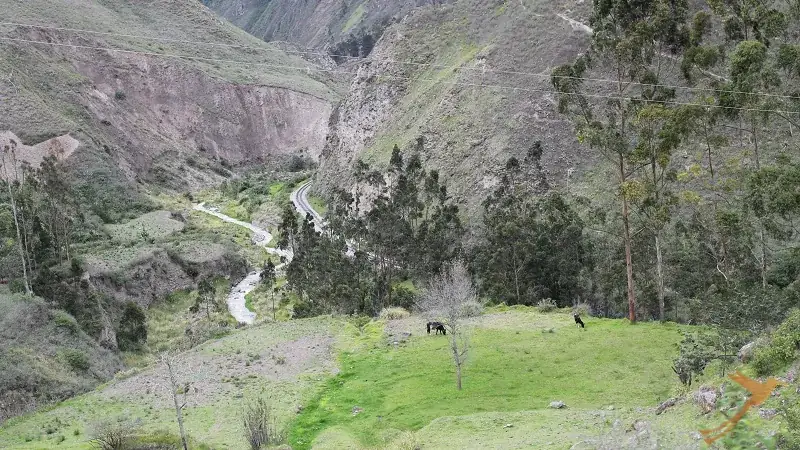
The route involved a zigzagging maneuver of repeated forward and backward movements down to the bottom of the deep, steep-walled valley. This is where the so-called Devil’s Nose must be conquered. We walked to the viewpoint to see this masterpiece of railway engineering. Impressive. Generally, this section is considered one of the most challenging railway construction projects ever. It would be great if it could be reactivated. The Ingapirca ruins are our next destination. We book a guided tour and learn a lot about the Incas and the Cañari.
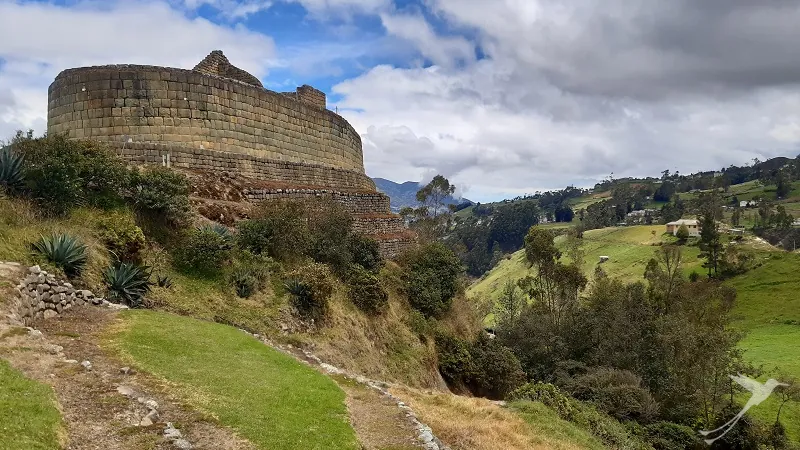
Cuenca
A lot of input for one day. Relatively exhausted, we arrived at the lovely Hotel Cruz del Vado in Cuenca. It’s a great hotel, but it seems quite quiet. The rooms are fantastic, though access to the hotel is not unrestricted—you always have to ring the bell to get in. The breakfast is also excellent and served on the third floor with a wonderful view. However, the laundry service was subpar. We had previously used a laundry service in Quito, which was fast, much cheaper, and more thorough. In Cuenca, we received our laundry washed but apparently not ironed, stuffed into bags. Quite disappointing.
So, how to describe Cuenca? The city is diverse with its old town, rivers, university area, and all surrounded by many mountains. The buildings are partly rundown but also truly magnificent. The traffic is terribly noisy. But life, for example, in front of the cathedrals, is wonderfully cheerful.
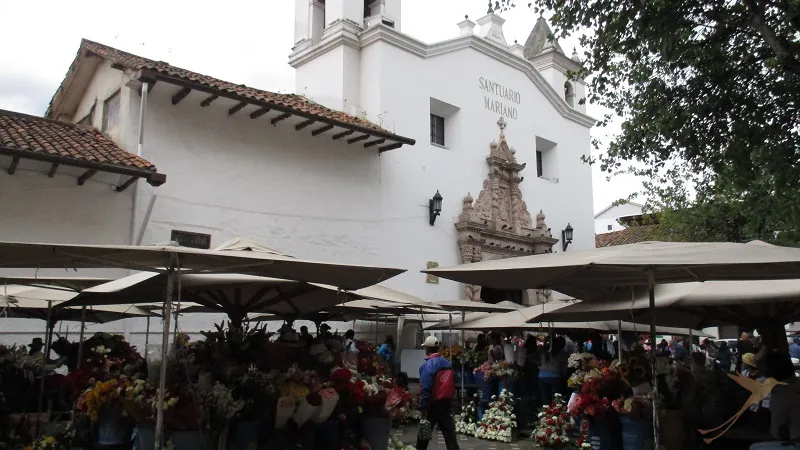
We start the day with a visit to a market. Great stalls with fruits and vegetables. Washington introduces me to my new favorite fruit: soursop (guanábana). We move to the meat section, where I realize that every part of the animal is consumed. We find tripe, pig’s feet, hearts, lungs, intestines, brains… quite commendable, but I switch to breathing through my mouth. Upstairs, there are countless stalls offering simple but nutritious food. It’s fascinating to see all the different people selling their goods. Next, we visit a hat museum. They still make hats there: Panama hats! You can buy them and even have them customized. We continue to a museum that focuses on the various ethnic groups of the country. Very worth seeing. The two cathedrals are closed, but there’s plenty of music in the square in front of them. Later, we visit craft markets, and before dinner, one of the cathedrals does open up.
El Cajas National Park and Guayaquil
Washington picked us up right on time once again, and we drove to Cajas National Park at over 4,000 meters above sea level. There was a beautiful circular hike, which ended up taking a bit longer than planned because we accidentally left the official path. And it was also a bit strenuous.
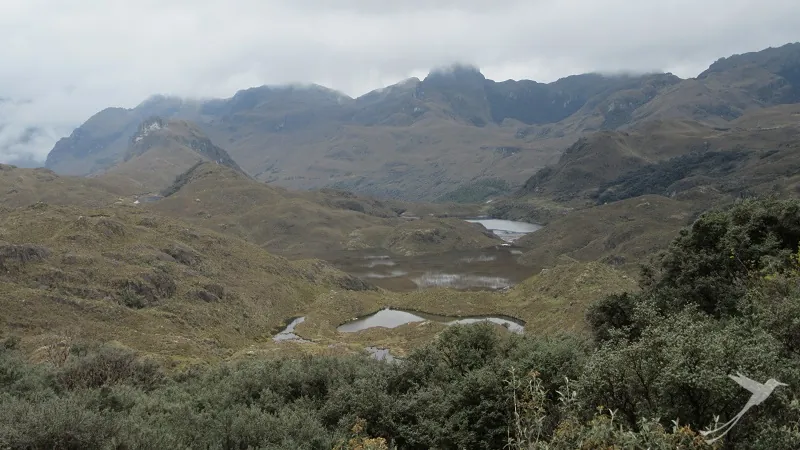
The weather is gloomy and damp, and the further route takes us through extreme fog banks, but Washington handles everything expertly. However, the wet weather has caused stones and rock fragments to loosen from the mountains and fall onto the road. There are people who stop and watch the large rocks roll down, but we were just relieved to get past those sections.
As we descend, the vegetation changes significantly. We see cacao and banana plantations, sugarcane and rice fields, and mango trees. It’s time for lunch, which typically costs $3 and includes a soup, main course, and drink. It’s quite hearty… Upon arriving in Guayaquil, we meet one of Washington’s friends, who wants to show us the highlights of the city. We visit the cathedral, and in the park in front of it, we get a small taste of what it’s like on the Galápagos Islands, as there are iguanas just roaming around. We walk along the waterfront and climb 444 steps in Las Peñas, a charming neighborhood. Since we are at sea level, it’s manageable, though still a bit warm. We enjoy the view and the last few hours with Washington before we say goodbye.
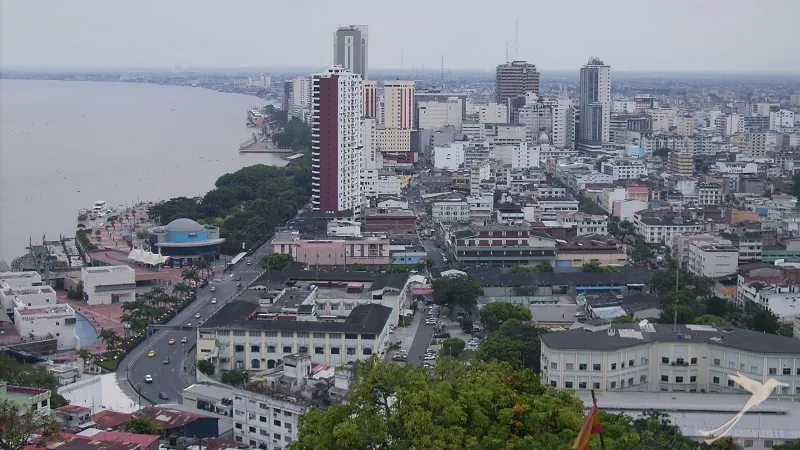
A truly wonderful trip, marked especially by Washington’s attentiveness, care, enthusiasm, hospitality, and his extensive knowledge, which he eagerly shared with us.
Would you like to experience the high altitudes of Chimborazo, hike along a historic railway route, or watch the making of Panama hats? We would be happy to create a customized trip for you where you can have authentic experiences. Feel free to get in touch with us.
visit our other channels
Newsletter Signup Form
Recent Posts
- Yasuni National Park – 4 Days at Sani Lodge. Experience Report Part 2 April 18, 2025
- Yasuni National Park – 4 Days at Sani Lodge. Experience Report Part 1 April 4, 2025
- Travel Tip Peru – Trujillo March 21, 2025
- Galapagos Travel: Everything You Need to Know for Your Trip March 7, 2025
- Travel Tip Peru – Machu Picchu February 21, 2025
